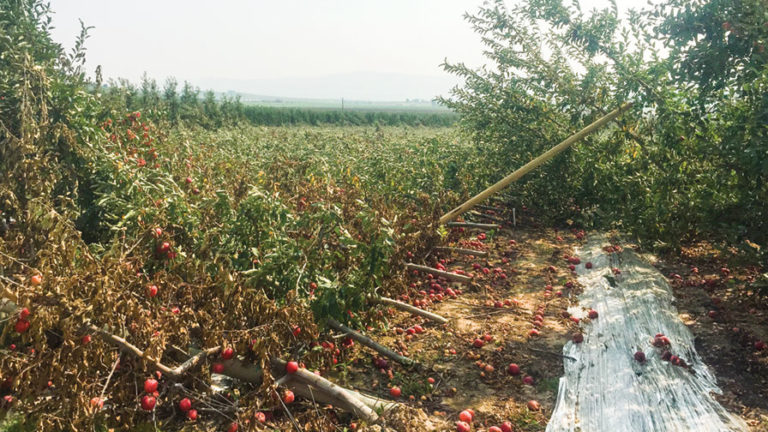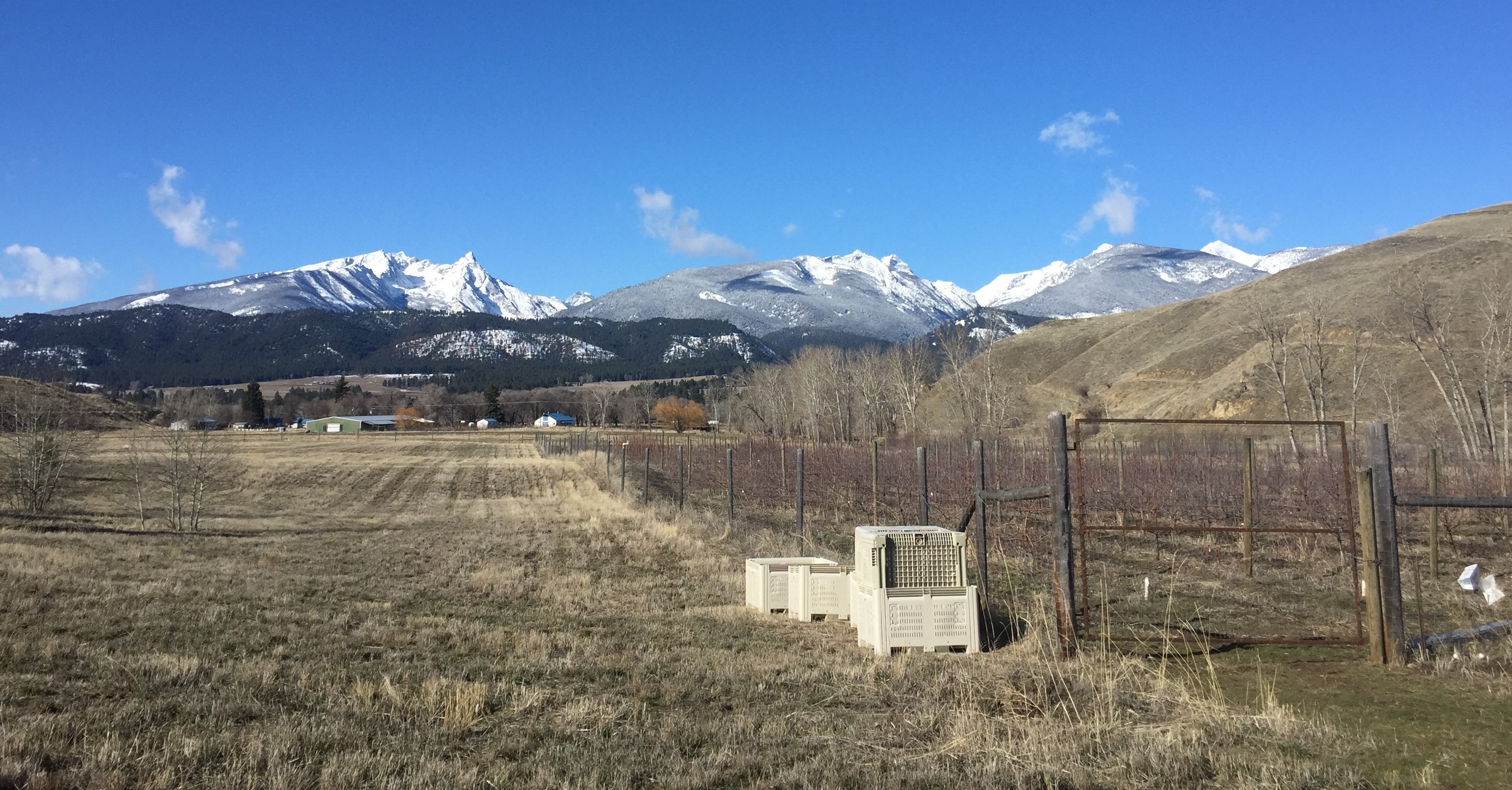Orchard Fencing and Trellises
Fencing
Installation of a quality fence is a major initial step in establishing an orchard, as it will not only provide protection for young trees but also prevent animals from becoming habituated to the area as a feeding ground.
The type of fence used will depend on wildlife pressure, personal aesthetic, and budget. The height of the fence and the materials you choose will depend on your situation and pest pressure. If deer are the main threat to your orchard, a 6-foot fence with a top rail is adequate. An 8-foot fence eliminates the need for a top rail and offers increased protection. A top rail provides a visual barrier to dear as well as adds stability to the fence. If elk frequent the property, an 8-foot fence with a top rail is recommended. For bear exclusion, the fence must be electrified to a minimum of 0.7 joules, as bears can climb fences and are not deterred by lighter shocks.
Pressure-treated wood posts or steel pipe are recommended for use as fence supports. Organic producers should consult with their certifier regarding materials that are permitted to be used for fencing. In some cases, treated wood is permitted for fencing but not for trellises. If treated wood is not permitted, steel may be used in place of wooden posts which, if untreated, will deteriorate quickly.
Panel fencing options include knotted field fence, woven plastic, and welded wire. This Fencing Cost Calculator will help you determine the best materials and design for your budget.
Additional fencing resources:
Montana Fish Wildlife and Parks, "How to Build a Fence with Wildlife in Mind"
BC Ministry of Agriculture, Deer Exclusion Fencing for Vineyards and Orchards
Penn State University, Integrated Management of White Tailed Deer
Orchard Trellis
If you are planting a high-density orchard, we recommend installing a trellis to support to your trees. Proper installation of your trellis is critical, as failed trellises are costly to replace and result in loss of production when trees are damaged and must be replaced. This Growing Produce article, "Don't underestimate the importance of a solid foundation in your orchard," provides helpful information for growers to consider when installing a trellis. Ontario Apple Growers offers a thorough guide for designing and installing apple trellises: Best Management Practices for Building Trellis Support Systems for High Density Ontario Apples. Information from this publication is also provided in the document Trellis Support Systems for High-Density Apples.

PHOTO: A failed trellis in a Washington apple orchard. To ensure proper installation of trellises several factors must be considered inlcuding soil type, wind, mature crop load, weight of irrigation, and other management additions. A failed trellis results in loss of income and additional costs to replace trees and trellis. (Photo credit, Karen Lewis, Washington State University, from "Don't underestimate the importance of a solid foundation in your orchard").


